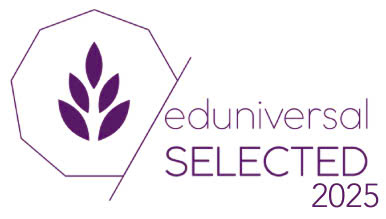- Eduniversal
-
-
Business Schools Ranking
-
Africa
- Algeria
- Angola
- Benin
- Cabo Verde
- Cameroon
- Congo
- Djibouti
- Egypt
- Eswatini
- Ethiopia
- Gabon
- Ghana
- Ivory Coast
- Kenya
- Lesotho
- Madagascar
- Malawi
- Mali
- Mauritania
- Mauritius
- Morocco
- Mozambique
- Namibia
- Nigeria
- RDC
- Rwanda
- Senegal
- Sierra Leone
- Somalia
- South Africa
- Sudan
- Tanzania
- Togo
- Tunisia
- Uganda
- Zambia
- Zimbabwe
- Central & Eastern Europe
- Central Asia
- Eurasia & Middle East
- Far East Asia
- Latin America
- North America
- Oceania
- Western Europe
-
Africa
- Schools of Excellence by field
- Awards
- News
- Contact
Summary:
Peru's business education is undergoing dynamic transformation. This article explores key trends, emerging challenges, and strategic opportunities shaping Peruvian business schools by 2025.
Understanding the Economic and Educational Context of Peru
Business schools in Peru are evolving within a dynamic economic and educational landscape marked by steady economic growth, increasing demand for higher education, and a pressing need to enhance the quality of human capital.
Peru’s economy is projected to grow around 3.1% in 2025, supported by expanding domestic demand despite challenges like slower public investment and electoral uncertainties.
The country has made significant strides in educational access, with a high literacy rate and a notable share of young adults completing bachelor’s degrees, though attainment of master’s level education remains low compared to OECD peers.
Business schools play a pivotal role in equipping Peru’s workforce to meet contemporary market demands and contribute to sustained economic progress amid these realities.
Looking at business education systems in other Latin American countries such as Argentina and Chile can provide useful comparisons for institutional benchmarking.
Key Trends Shaping Peruvian Business Schools by 2025
Internationalization
There is an increasing emphasis on integrating global perspectives, cross-border collaborations, and attracting diverse student cohorts. While Latin American business education is still growing in global rankings, there is a clear movement to align with international standards and practices to enhance competitiveness and graduates' mobility.
Emerging Specializations
Schools are broadening curricula beyond traditional management and finance to include areas relevant to Peru’s economy such as sustainability, digital transformation, and green business, reflecting national priorities like unlocking Peru’s green economic potential.
Specialized training in entrepreneurship, supply chain, and data analytics is also rising in response to evolving market needs.
These trends are reflective of broader regional transformations seen in countries like Mexico, where similar diversification in specialization is occurring.
Digital Transformation
The acceleration of digital technologies and remote learning is reshaping how business education is delivered. Hybrid models, online platforms, and the use of learning analytics improve access and personalize learning experiences while responding to student expectations for flexibility and technological integration.
Sustainability Focus
Reflecting global and national imperatives, business schools in Peru are integrating sustainable development goals into their frameworks, emphasizing corporate social responsibility, environmental management, and ethics as core components of leadership education.
Corporate Partnerships
Strengthening ties with industry through internships, consulting projects, and guest lectures enhances practical learning and employment opportunities. This collaborative approach aligns education with real-world challenges, making graduates more job-ready and responsive to business trends.
Evolving Student Expectations
Students demand programs that are relevant, flexible, and provide clear pathways to employability. There is growing interest in lifelong learning, micro-credentials, and interdisciplinary skills to navigate a complex, rapidly-changing labor market.
In markets like Brazil, institutions already respond to similar student expectations with adaptive learning formats.
Major Challenges Facing Business Schools in Peru
Funding Constraints
Public investment in education remains comparatively low. Despite efforts, funding limitations affect faculty quality, infrastructure, and research capacities, underpinning challenges in delivering world-class education.
Competitiveness and Talent Attraction
Business schools compete locally and regionally for top students and faculty. Limited resources and the lure of better pay abroad impede Peru’s ability to attract and retain academic talent, impacting research output and program innovation.
Evolving Skill Requirements
Rapid technological change demands ongoing curriculum updates to include digital literacy, AI, data science, and soft skills such as adaptability and ethical decision-making. Aligning these with market needs is a continuous challenge.
Impact of New Technologies
While digital transformation provides opportunities, it also requires substantial investment and training to implement effectively, particularly for faculty and administrative staff who may lack experience with new tools.
Strategic Opportunities for the Future
Innovation and Transformation
By leveraging digital platforms, international collaborations, and interdisciplinary approaches, schools can modernize education delivery, improve inclusivity, and expand reach beyond traditional urban centers.
Inspiring examples can be drawn from countries like Australia, known for its robust e-learning infrastructures in higher education.
Alignment with National Growth Sectors
Tailoring programs to Peru's economic strengths—such as mining, agriculture, renewable energy, and emerging tech startups—can enhance relevance and create practical pathways for graduates into key industries.
Sustainability Leadership
Embedding sustainability and green business principles equips future business leaders to contribute meaningfully to Peru’s and the region’s pressing environmental challenges, positioning schools as drivers of socially responsible innovation.
Enhanced Corporate Integration
Deeper partnerships with businesses can enrich curricula, provide experiential learning, and increase graduate employability, creating a virtuous cycle of relevance and impact.
Business schools in other Latin markets like Colombia are also leveraging corporate collaborations to create real-world impact.
Meeting Student Demand for Flexibility
Expanding digital and hybrid learning options, modular courses, and life-long learning programs can attract a broader and more diverse student body, including working professionals and international students.
The Path Forward: Shaping Peru's Future Business Leaders
In conclusion, Peruvian business schools in 2025 occupy a critical nexus between education and economic development, facing challenges typical of emerging economies but armed with considerable growth potential.
Their ability to innovate, internationalize, and align with both market and societal needs will determine their success in shaping the country’s business leaders of tomorrow.
This transformative moment calls for strategic investments, stronger policy support, and bold educational reforms that prioritize quality, relevance, and inclusion.
Reflecting on these dynamics, stakeholders—educators, businesses, policymakers, and students—must collectively drive forward-thinking strategies.
Doing so will not only elevate Peruvian business education but also catalyze broader socio-economic progress, ensuring that institutions are not just reactive but proactive players in Peru’s evolving economic landscape. This is an invitation for all players to invest, innovate, and collaborate towards a resilient, future-ready education ecosystem.
To compare similar evolving education environments, check out the Peruvian business school rankings today.
Business Schools Ranking in Peru
|
5 Palmes of Excellence Universal Business Schools with strong global influence |
Rank Position in
Palmes’ League |
Deans’ Recommendation
rate 2025 |
|---|---|---|
| 1 | 262 ‰ FEATURED | |
|
CENTRUM PUCP Business School - Pontificia Universidad Católica del Perú |
2 | 226 ‰ FEATURED |
(1) Upgrade league has been approved in 2025 by the Eduniversal International Scientific Committee |
|
4 Palmes of Excellence Top Business Schools with significant international influence |
Rank Position in
Palmes’ League |
Deans’ Recommendation
rate 2025 |
|---|---|---|
| 1 | 236 ‰ |
|
3 Palmes of Excellence Excellent Business Schools with reinforcing international influence |
Rank Position in
Palmes’ League |
Deans’ Recommendation
rate 2025 |
|---|---|---|
|
Universidad San Ignacio De Loyola (USIL) - Facultad de Ciencias Empresariales |
1 | 85 ‰ |
| 2 | 69 ‰ |
|
2 Palmes of Excellence Good Business Schools with strong regional influence |
Rank Position in
Palmes’ League |
Deans’ Recommendation
rate 2025 |
|---|---|---|
|
Universidad Peruana de Ciencias Aplicadas - UPC Graduate School |
1 | 41 ‰ |
The Eduniversal Selected Schools list aims to highlight institutions by country are not yet eligible for a Palmes of Excellence League entry but are on a positive path toward achieving it.
The schools on the Eduniversal Selected list have been recognized by Eduniversal for their innovative projects, disruptive energy, and growing potential.
The schools on the Eduniversal Selected list have been recognized by Eduniversal for their innovative projects, disruptive energy, and growing potential.
Faculty of Economics and Finance- Universidad de San Martín de Porres
Faculty of Economics and Management - Universidad Nacional Mayor de San Marcos
School of Economics - Universidad de Lima
Universidad Nacional de San Antonio Abad del Cusco
For a complete overview of master’s programs in Peru, visit our website.
You’ll find updated rankings, detailed program profiles, and exclusive advice to help you choose the right path for your career.
You’ll find updated rankings, detailed program profiles, and exclusive advice to help you choose the right path for your career.







